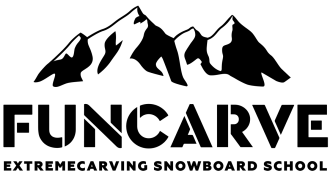Philosophy. Carving on a snowboard
Equipment options
The stiff equipment for carving has several advantages:
- After the first tough steps, there comes a stable comfortable riding on the edges in the Carver weekend style;
- Speed and stability of behavior in all kinds of experiments;
- The culture and a peculiar style are described in The Carver’s Almanac.
The versatility of soft equipment is its absolute advantage. Let’s see what we can do with a soft board:
- Snowboard every day, at any time, in any condition of the snow, and on any slopes;
- Have an easy freeride in small and greater mountains;
- A great freestyle, Butter tricks, spines, walls, etc. Generally, it is fine to ride to the park just to stand there for a while.
- Choose stiff slopes and carve beautifully on the edges!
Learning How to Carve On a Snowboard
The main advantage of soft staff is the ability to create a method of teaching snowboarding «from scratch» or for advanced riders. The right teaching method is based on the fundamental principles*, which ensure the growth of students’ technique. The main con of plastic shoes is that they are too stiff and sensitive. And a snowboard starts carving the turn of the long radius even at the smallest edging angles.
It is quite difficult to understand and repeat any exercise for those 2 seconds that a student can independently stand on a slope. There is a common expression that foreign snowboard instructors use: « No speed — no problem! ». Once a student exceeds the speed when learning a new move, it instantly gets replaced by the usual one, which is not always correct.
Stiff equipment for a beginner, who is just starting to understand what carving really is, is the right way to turn a three-day training into a two-season nightmare. It becomes clear that one can learn carving on a stiff board only at the final stages of training when the student has acquired improved skills and can easily ride at high speed. When a carver knows his/her body and can feel it well, he/she can skillfully snowboard, remember the task given at the start of the downhill and perform it. But, unfortunately, even under such conditions, one may need to sacrifice the benefits of equipment by, for example, undoing boots to be able to feel the ride. It is necessary for the effective implementation of vertical work.
One should not choose stiff equipment at once. Only the growth of technology and the thirst for speed can give an impulse to buying it.
This is why we train newcomers on a soft board by default. All moves on it are habitual and predictable, which gives way for fruitful training. Any advanced snowboarder can control the speed, necessary to perform the exercises correctly. Moreover, the instructor can speak with the student not just at the start of the ride, but also in motion, correcting the student and telling him/her about the moves. Due to the possibilities of a soft board, you will be able to experiment with the position of the body, weight distribution, and vertical work at slow speed, as well as to feel every edging angle and get a clear, traceable response. The experience gained in such conditions will irrevocably improve the technical skills of a student.
In the meantime, we do not agitate for carving exclusively on soft equipment. We understand all the pros of the hard boot and support everyone who has decided to switch over to this kind of snowboarding. A lot of our friends and students learned how to handle a stiff board just for one season.



